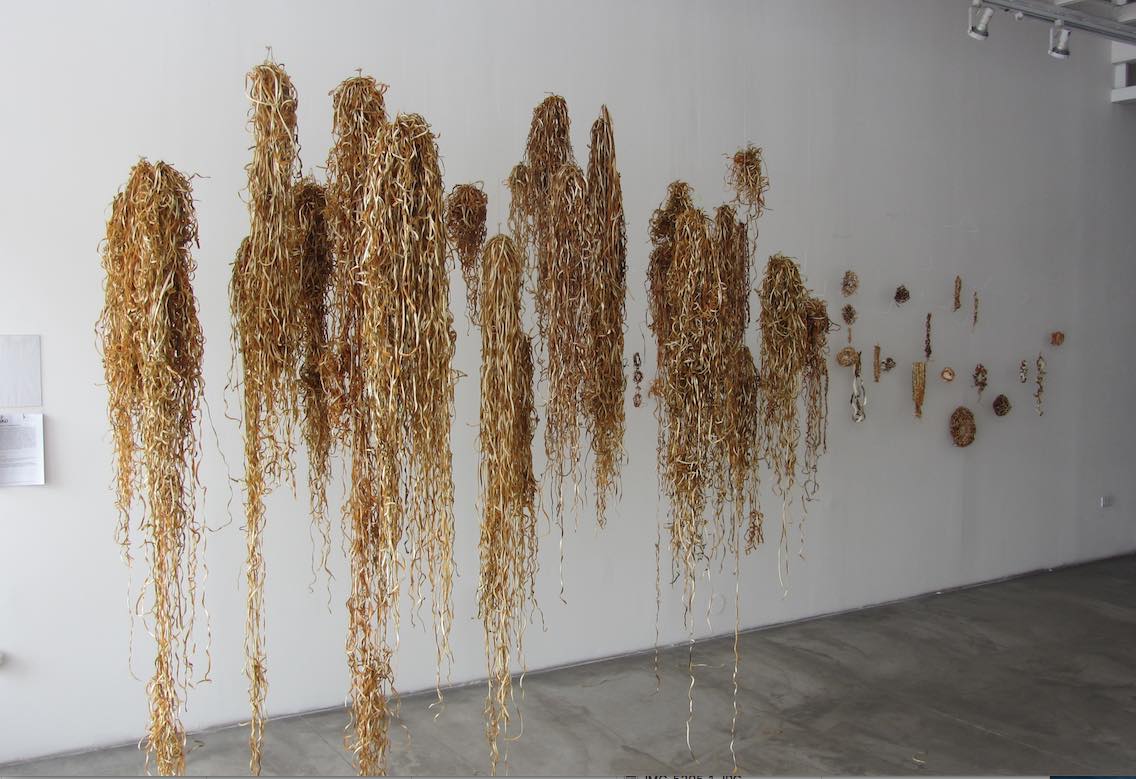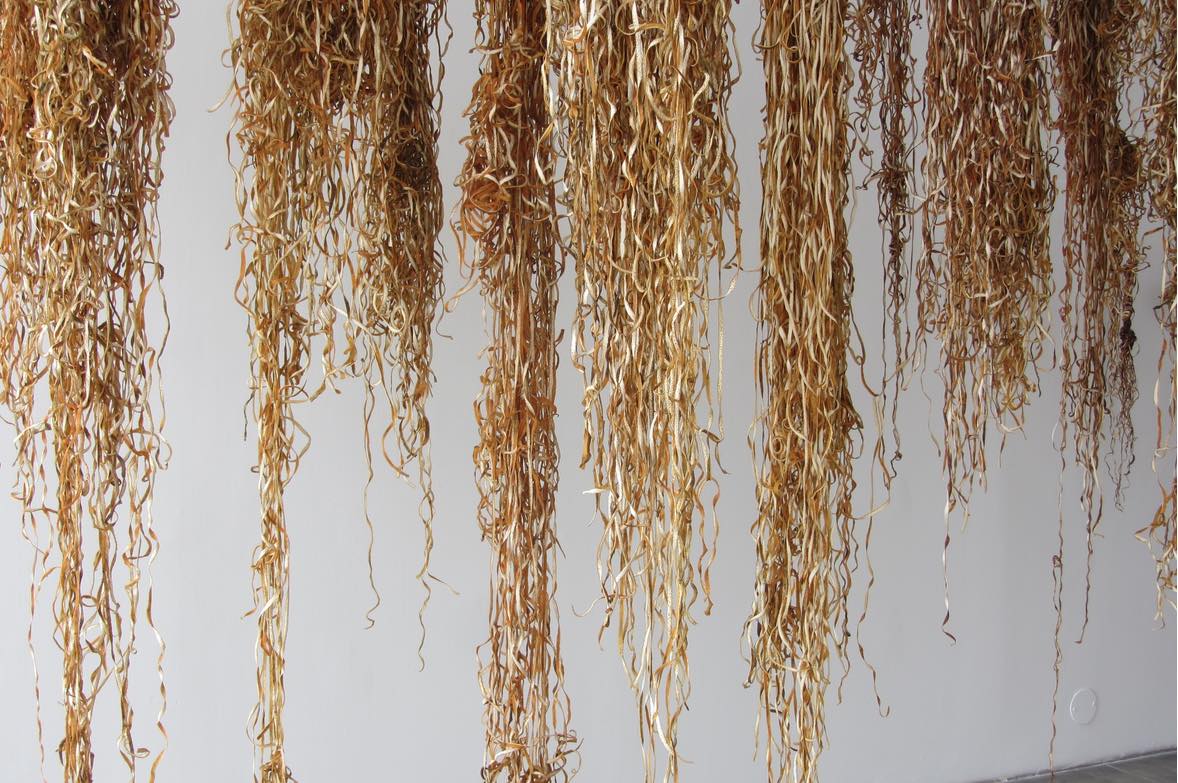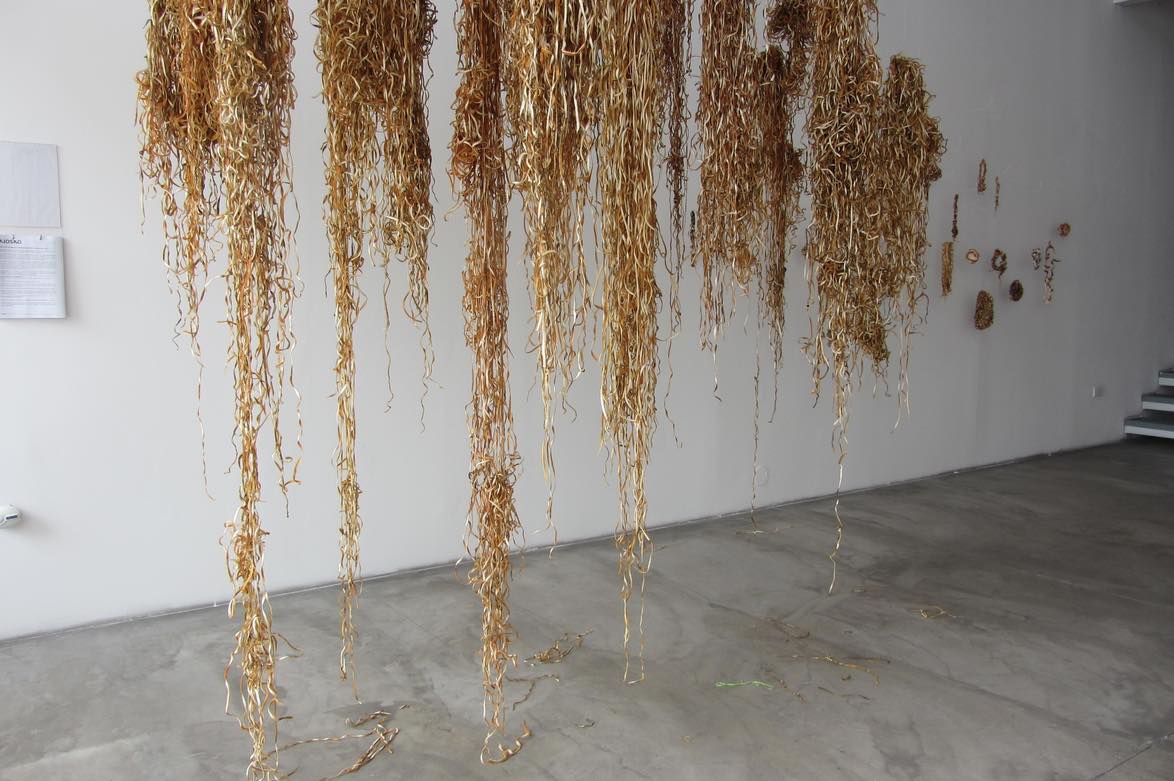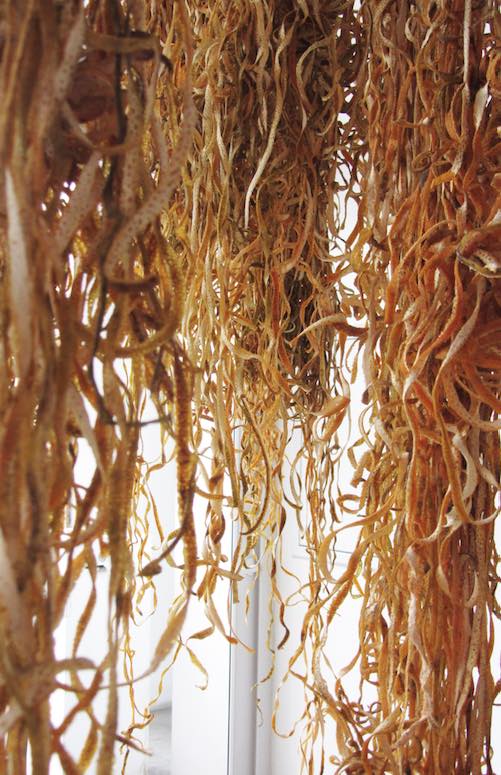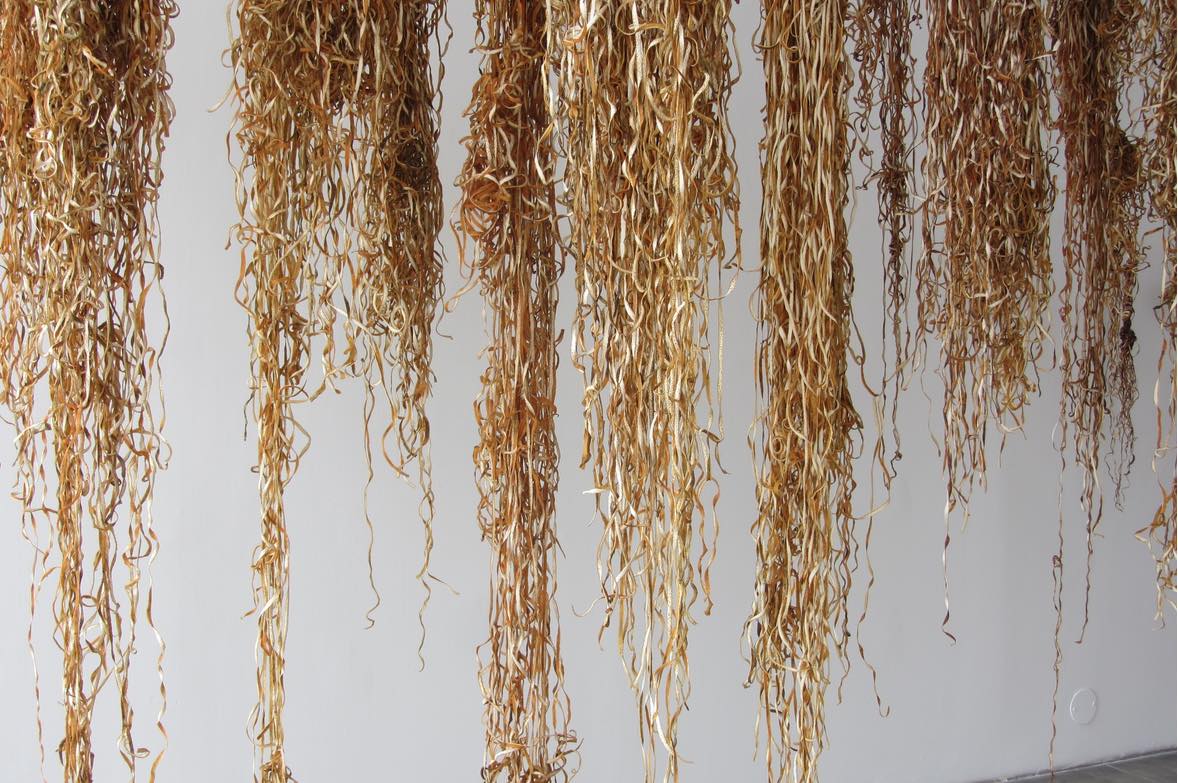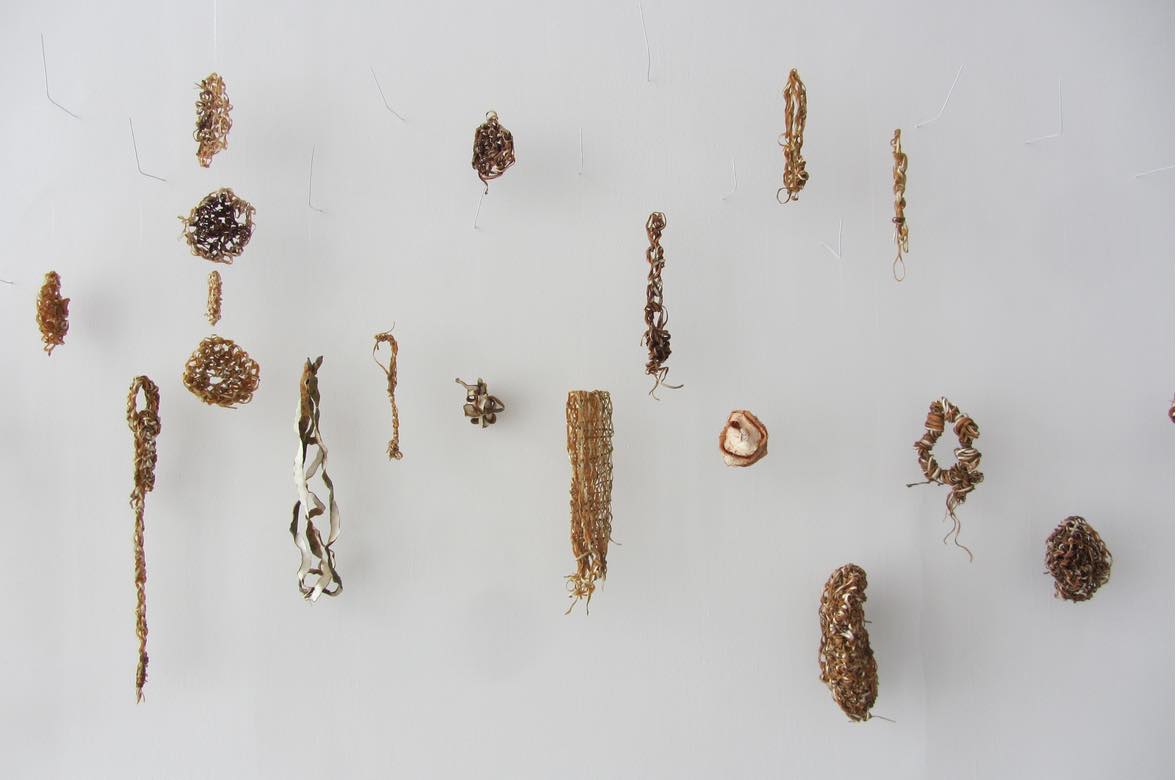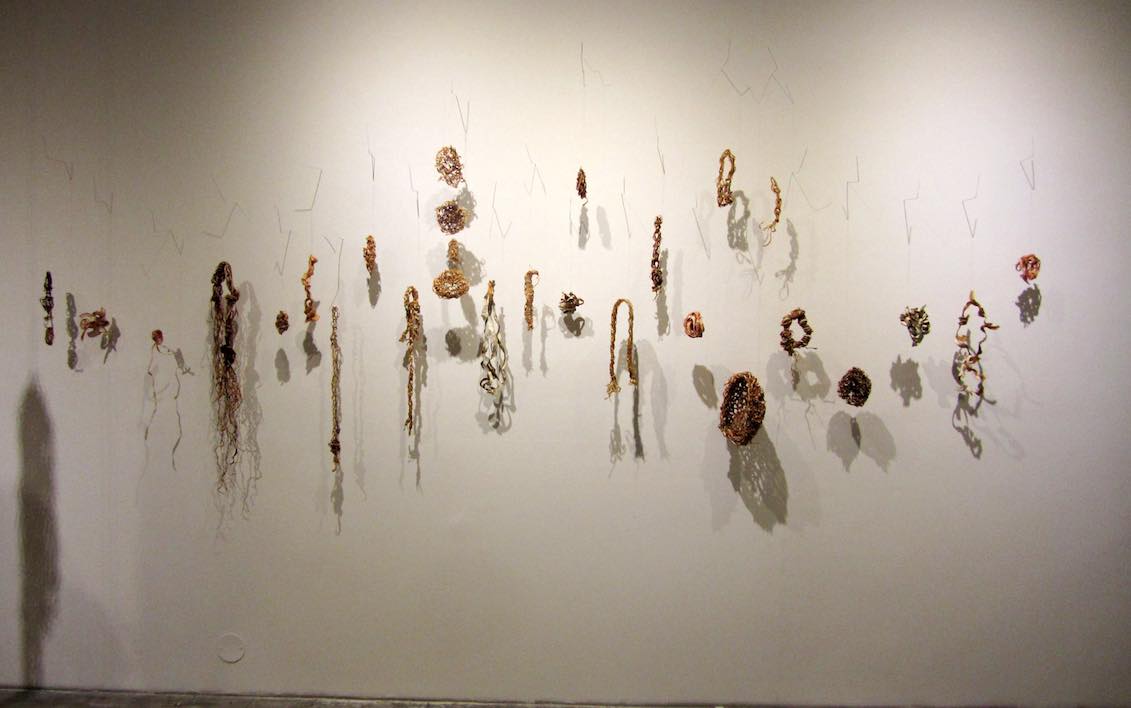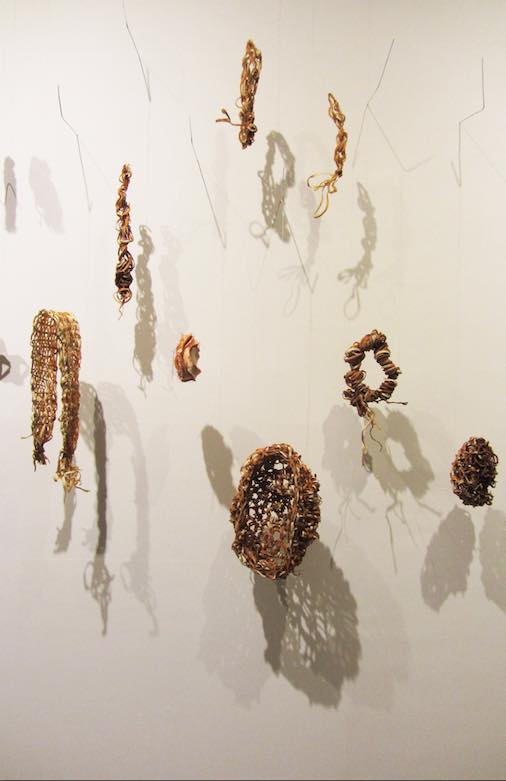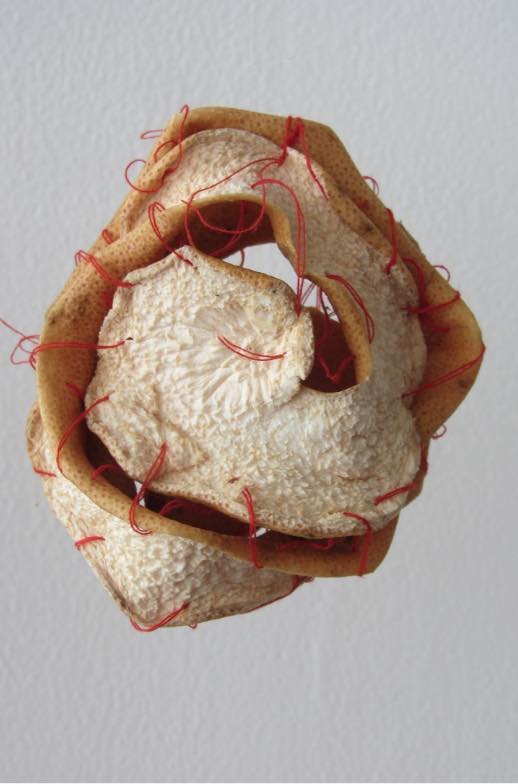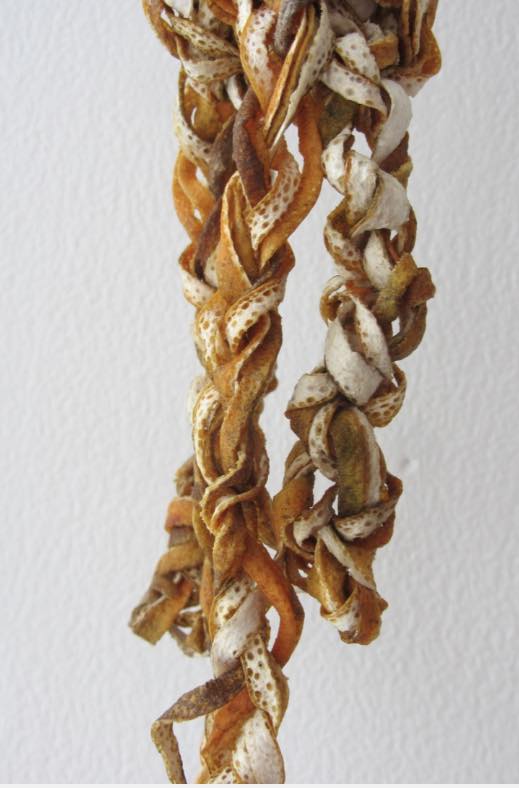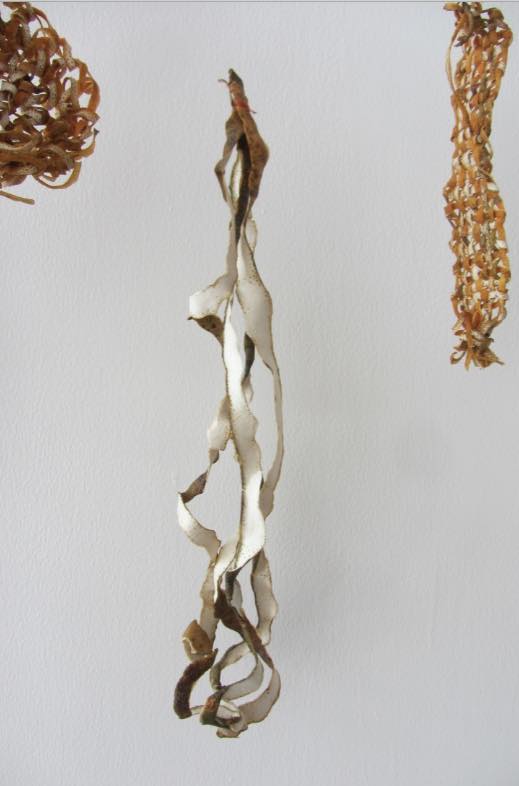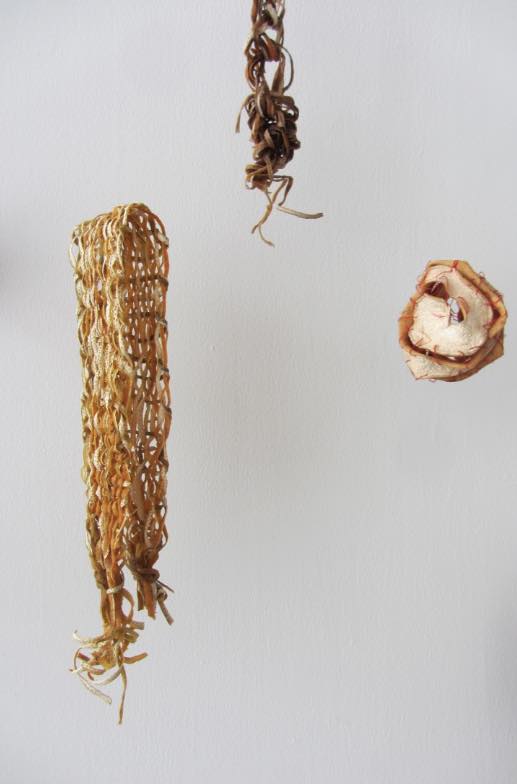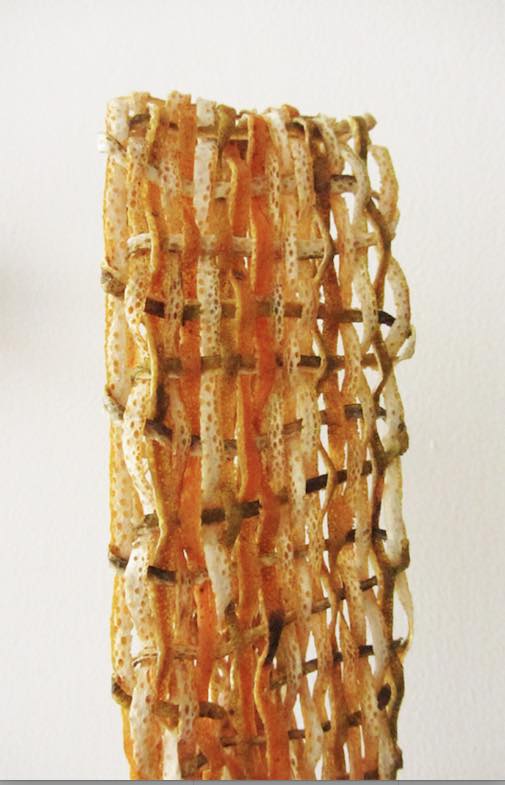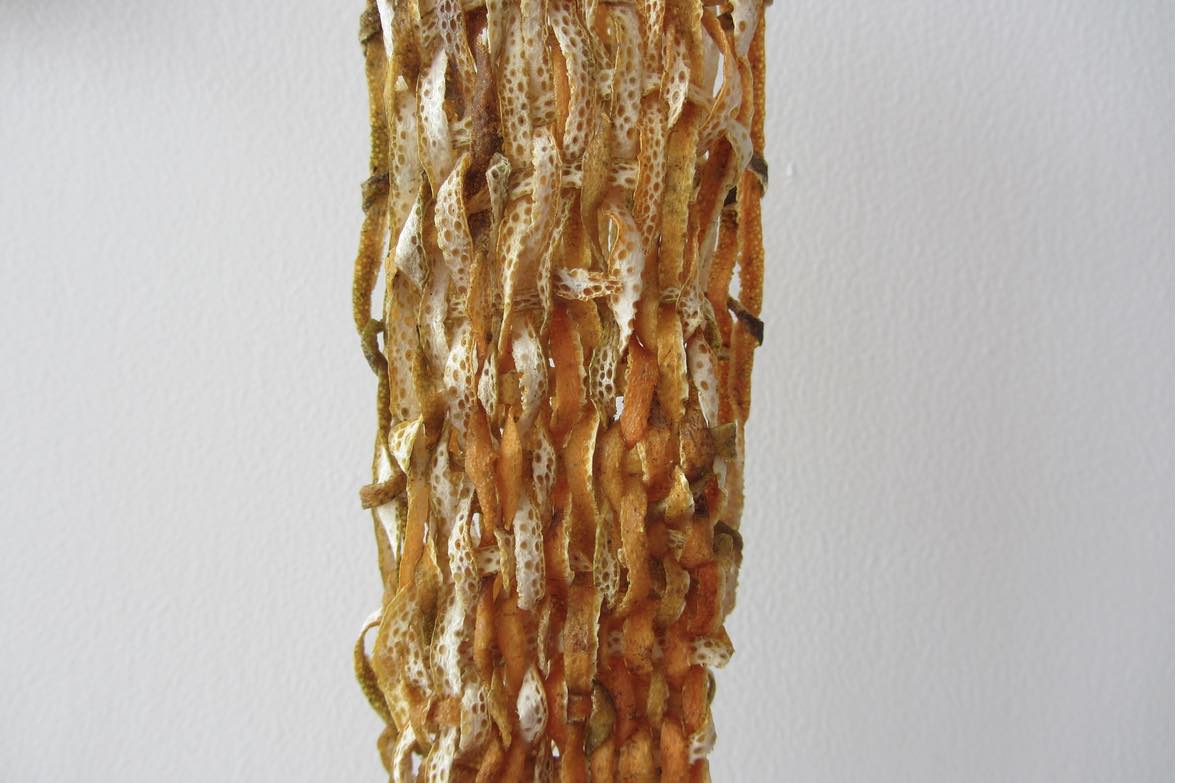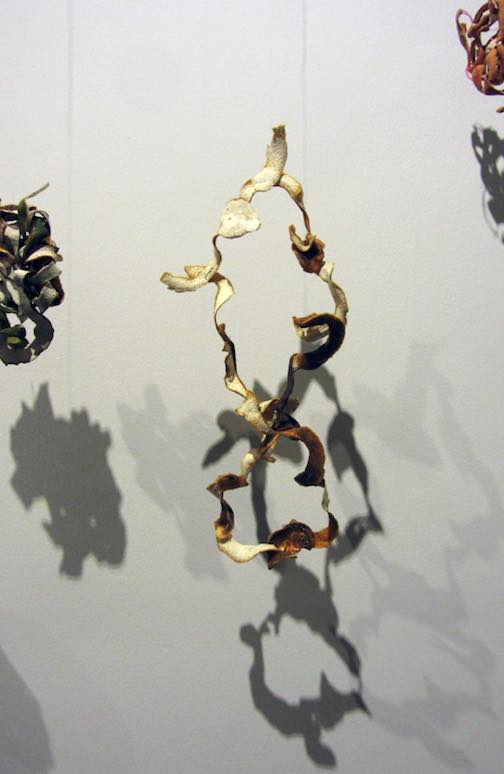Touching and changing Naranca, 2017, installation
dried orange skin, installation, Kiosko Gallery, Santa Cruz de la Sierra, Bolivia
Already mentioned in ancient Chinese literature (4° Century BC), oranges have become one of most widely consumed fruits worldwide. Their presence has spread from the Far East, through Mediterranean routes (during the Crusades – 12th – 13th Cent.), under Persian and Arabic influence, arriving first in Sicily and Andalusia. Only later (around the 2nd half of 15th century), the Portuguese sailors brought them also in Latin America. The orange plants nowadays grow in tropical and subtropical climates, and Brazil and Latin America have long become main producers. The name itself – arabic: n?rang – comes from the Sànskrit word naranga whose linguistic root nar means “perfume”. Starting from this reflection about the word etymology, I considered offering a material installation which originates from the very presence of the fruits’ skin which unfold as a natural intertwinement. Scent, form and the color nuances compose a tangle which will be perceived and smelled out from the viewers as well in tactile way… up to literally crumbling the shapes. Crumbs and dust, once produced, will be then delivered back to mother-earth, the very source of their own presence.
